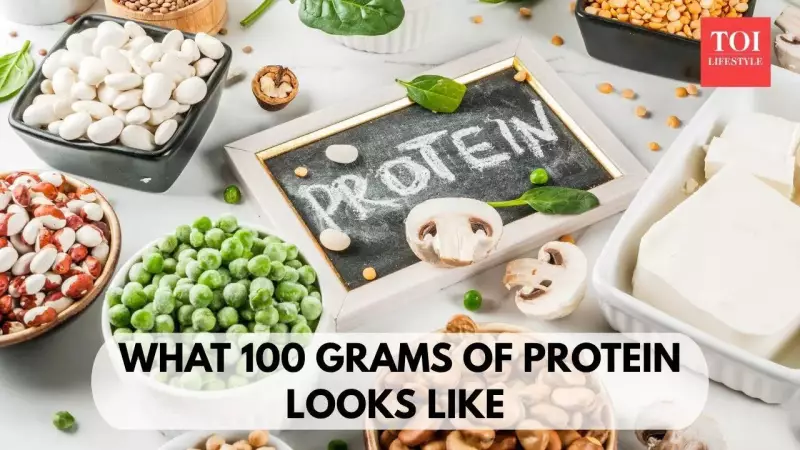
Forget the idea that protein is only for bodybuilders. This essential macronutrient is a fundamental building block for your entire body, working tirelessly in nearly every cell. It's crucial not just for muscles, but for your bones, skin, hair, enzymes, and hormones. As one of the three key macronutrients—alongside carbohydrates and fats—getting enough protein is non-negotiable for everyone, whether you're a gym enthusiast or not.
Despite the constant buzz around protein, a significant knowledge gap exists. Most people are unclear about their daily requirements and what those numbers actually look like on their plates. This visual guide demystifies protein intake, offering a clear picture for every dietary preference.
How Much Protein Do You Actually Need?
There is no universal answer for protein intake. According to the USDA's Dietary Guidelines, the Recommended Dietary Allowance (RDA) is 0.8 grams of protein per kilogram of body weight. It's critical to understand that this is the minimum amount needed to prevent deficiency and meet basic nutritional needs, not necessarily the optimal target for everyone.
Your ideal protein consumption is highly personal and depends on several factors, including your Body Mass Index (BMI), activity level, age, gender, and overall health. For example, a person weighing 200 pounds (approx. 91 kg) would need about 73 grams daily, while someone at 115 pounds (approx. 52 kg) requires only around 43 grams. It's also important to note that consuming excessive protein can be harmful. You can determine your specific needs using the USDA's online calculator.
A Visual Plate Guide to 100 Grams of Protein
Instead of relying on supplements, the healthiest approach is to build a well-balanced, nutritious diet. Here is a breakdown of what achieving approximately 100 grams of protein looks like across different diets. Remember, the protein values are based on specific products and their nutrition labels, so exact numbers may vary by brand and preparation method.
For The Non-Vegetarian Plate
This plan offers a diverse mix of foods throughout the day, totaling about 103 grams of protein:
- Two eggs (12 grams)
- One serving of snack cheese (5 grams)
- A portion of Greek yoghurt (15 grams)
- Beef sausage (14 grams)
- One can of tuna (27 grams)
- ½ cup of rolled oats (5 grams)
- 2 ounces of deli ham (10 grams)
- 1 ounce of mixed nuts (5 grams)
- Two slices of rye bread (10 grams)
For The Vegetarian Plate
Even without meat, vegetarians can effectively meet their protein goals. This combination provides roughly 99 grams of protein:
- Four eggs (24 grams)
- ½ cup of rolled oats (5 grams)
- Two snack cheeses (10 grams)
- ¼ cup of protein granola (10 grams)
- A single-serve Greek yoghurt (15 grams)
- One tablespoon of hemp seeds (4 grams)
- Two tablespoons of peanut butter (7 grams)
- One scoop of plant-based protein powder (20 grams)
For The Vegan Plate
A completely plant-based diet can also be protein-rich. This assortment adds up to approximately 79 grams of protein, showing a slightly lower yield for the same volume of food, often requiring more strategic planning or supplements:
- 1 ounce of nuts (5 grams)
- ½ cup of rolled oats (5 grams)
- A protein granola bar (8 grams)
- Two slices of rye bread (10 grams)
- ¼ cup of protein granola (10 grams)
- One tablespoon of hemp seeds (4 grams)
- Two tablespoons of chia seeds (10 grams)
- Two tablespoons of peanut butter (7 grams)
- One scoop of plant-based protein powder (20 grams)
Meeting your protein goals doesn't have to be a complex puzzle. By focusing on a varied and balanced diet with the right combination of foods, you can easily fuel your body for optimal health. Share this guide with anyone who finds it challenging to meet their daily protein requirements.





